Hi all,
This has been a fun project.
Got two LM1875s paralleled and measured. Inputs are balanced.
Note the 2nd harmonics is much higher than all other. Suppose to account for a nice warm tube-like sound.
Was able to produce 30W into 8 ohms and 46W into 4 ohms.
Linear power supply using 20V secondaries (Antek AS-2220) produced 27.7V at idle. Voltage dipped under the load.
Onto the LM1875 measurements:
Gain: 25.88dB
SNR: 99.84dB
Sensitivity: 0.7mV rms
8ohm
PSU: 26.5V under the load
15.7Vrms max output
30W into 8 ohms
THD+N: 0.00825% or -81.68dB at 1kHz
THD+N: 0.00949% or -80.46dB at 10kHz
Heatsink barely got hot.
4ohm
PSU: 25.8V under the load
13.69Vrms max output
46W into 4 ohms
THD+N: 0.017% or -75.16dB at 1kHz
THD+N: 0.02% or -73.12dB at 10kHz
Heatsink got warm.
4ohm 5W output
THD+N: 0.0145% or -77.78dB at 1kHz
Benefits of using two chips in parallel include:
increase of the output drive capability of an amplifier,
reduced voltage noise (better SNR),
and reduced output offset error.
Overall the performance into 4 ohms matches datasheet graph for 8 ohms, which is to be expected.
Performance into 8 ohms is better than that in the datasheet.
Listening tests:
It is definitely HiFi sound.
If someone is on the fence, I say go for it.
With the right speakers this chip will rock.
Great resolution in mids and highs. I liked mids especially.
Hard to explain, maybe that is the signature sound of LM1875.
Lower end was not as tight. I would use separate subwoofer amp.
Overall it got pretty loud. Even with my low sensitivity ELACs.
Not as dynamic as my TDA7293 amp,
but that might have something to do with the fact that TDA7293 is three time more powerful.
Maybe higher sensitivity speakers like Klipsch will work better with this chip.
Sounded better than cheap Class D amps for sure.
Way better resolution in mids and highs.
This has been a fun project.
Got two LM1875s paralleled and measured. Inputs are balanced.
Note the 2nd harmonics is much higher than all other. Suppose to account for a nice warm tube-like sound.
Was able to produce 30W into 8 ohms and 46W into 4 ohms.
Linear power supply using 20V secondaries (Antek AS-2220) produced 27.7V at idle. Voltage dipped under the load.
Onto the LM1875 measurements:
Gain: 25.88dB
SNR: 99.84dB
Sensitivity: 0.7mV rms
8ohm
PSU: 26.5V under the load
15.7Vrms max output
30W into 8 ohms
THD+N: 0.00825% or -81.68dB at 1kHz
THD+N: 0.00949% or -80.46dB at 10kHz
Heatsink barely got hot.
4ohm
PSU: 25.8V under the load
13.69Vrms max output
46W into 4 ohms
THD+N: 0.017% or -75.16dB at 1kHz
THD+N: 0.02% or -73.12dB at 10kHz
Heatsink got warm.
4ohm 5W output
THD+N: 0.0145% or -77.78dB at 1kHz
Benefits of using two chips in parallel include:
increase of the output drive capability of an amplifier,
reduced voltage noise (better SNR),
and reduced output offset error.
Overall the performance into 4 ohms matches datasheet graph for 8 ohms, which is to be expected.
Performance into 8 ohms is better than that in the datasheet.
Listening tests:
It is definitely HiFi sound.
If someone is on the fence, I say go for it.
With the right speakers this chip will rock.
Great resolution in mids and highs. I liked mids especially.
Hard to explain, maybe that is the signature sound of LM1875.
Lower end was not as tight. I would use separate subwoofer amp.
Overall it got pretty loud. Even with my low sensitivity ELACs.
Not as dynamic as my TDA7293 amp,
but that might have something to do with the fact that TDA7293 is three time more powerful.
Maybe higher sensitivity speakers like Klipsch will work better with this chip.
Sounded better than cheap Class D amps for sure.
Way better resolution in mids and highs.
Attachments
-
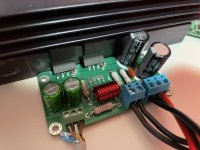 IMG_1604.jpeg376.8 KB · Views: 175
IMG_1604.jpeg376.8 KB · Views: 175 -
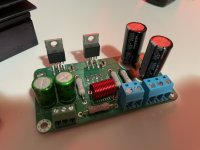 IMG_1606.jpeg317.7 KB · Views: 175
IMG_1606.jpeg317.7 KB · Views: 175 -
 IMG_1605.jpeg362.5 KB · Views: 162
IMG_1605.jpeg362.5 KB · Views: 162 -
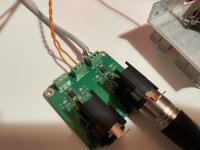 IMG_1607.jpeg370.6 KB · Views: 165
IMG_1607.jpeg370.6 KB · Views: 165 -
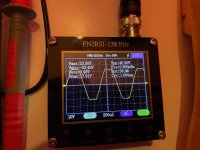 IMG_1609.jpeg379.2 KB · Views: 157
IMG_1609.jpeg379.2 KB · Views: 157 -
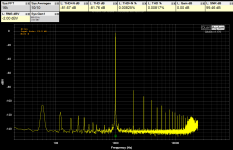 thd_n_1khz_8ohm.PNG26.7 KB · Views: 169
thd_n_1khz_8ohm.PNG26.7 KB · Views: 169 -
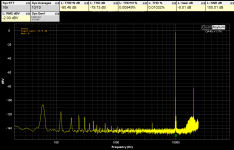 thd_n_10khz_8ohm.PNG26.6 KB · Views: 144
thd_n_10khz_8ohm.PNG26.6 KB · Views: 144 -
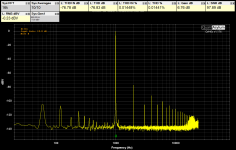 thd_n_1khz_4ohm_5W.PNG26.6 KB · Views: 134
thd_n_1khz_4ohm_5W.PNG26.6 KB · Views: 134 -
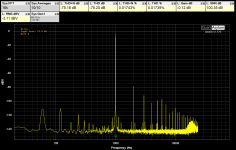 thd_n_1khz_4ohm.PNG27 KB · Views: 130
thd_n_1khz_4ohm.PNG27 KB · Views: 130 -
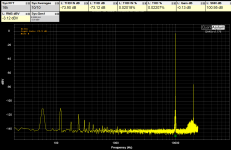 thd_n_10khz_4ohm.PNG26.2 KB · Views: 138
thd_n_10khz_4ohm.PNG26.2 KB · Views: 138 -
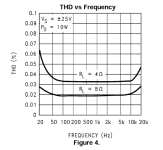 thd_datasheet.PNG45.4 KB · Views: 171
thd_datasheet.PNG45.4 KB · Views: 171
Last edited: